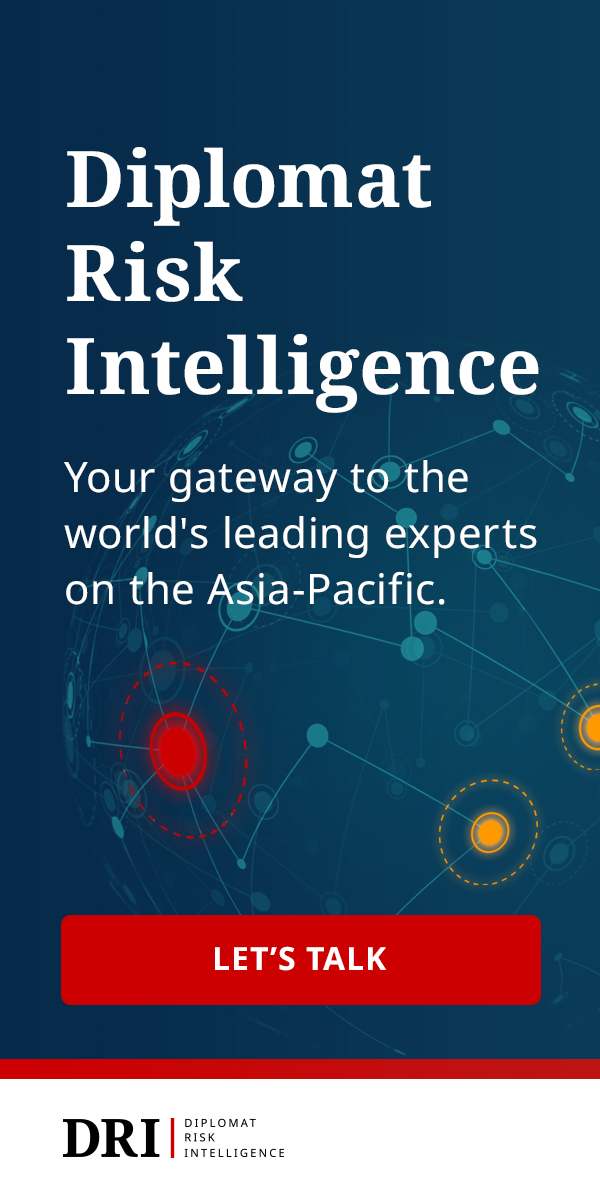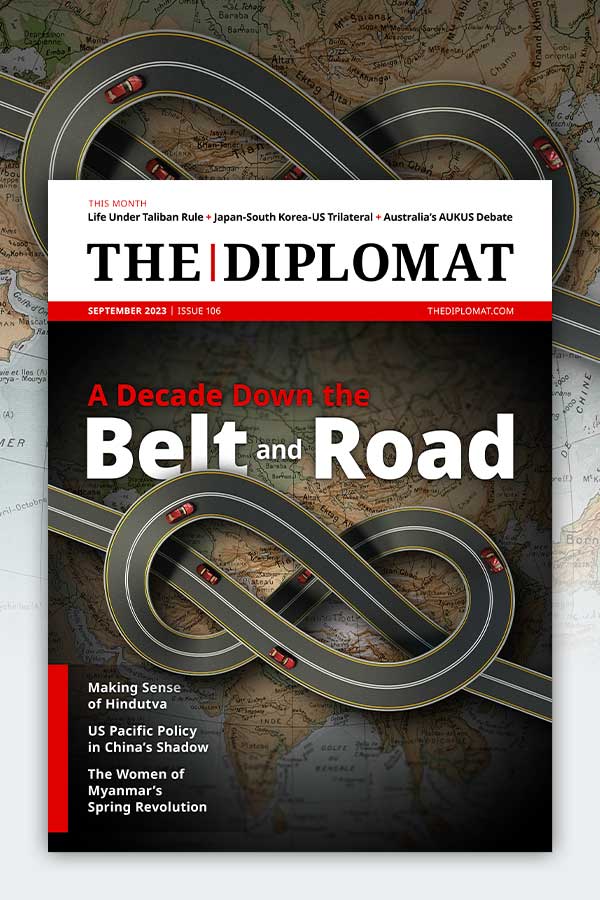| Welcome to the latest issue of Diplomat Brief. This week our top story explores the evolution of China’s Belt and Road Initiative as it turns 10. We also have an interview with George Magnus, a research associate at China Centre, Oxford University and the School of Oriental and African Studies in London, on China’s economic malaise and how it compares to Japan’s bubble burst. |
| Story of the week | ![[object Object]](https://thediplomat.com/diplomat-brief/2023/vol37/images/feature.jpg) | Diplomacy How China’s Belt and Road Took Over the WorldWhat Happened: 10 years ago this month, Chinese leader Xi Jinping proposed a “Silk Road Economic Belt” during a speech in Kazakhstan. The original idea was modest: a “Eurasian” economic corridor involving policy coordination, road connections, monetary cooperation, and trade facilitation (think: lowered tariffs and streamlined customs). 10 years later, and the Belt and Road Initiative, as it’s now known, is nearly unrecognizable: It spans (almost) every region of the globe and covers every sector from hard infrastructure to digital technology to cultural exchanges. How did the BRI take over the world? Our Focus: To mark the 10th anniversary, The Diplomat combed through data on who joined the Belt and Road and when. Regionally, BRI members – there are 154, as of September 2023 – account for all of Central and Southeast Asia, nearly all of Africa and the Middle East, and three-quarters of South Asia. Lower income countries are more likely to have joined up, while fewer than half of high income countries have done so. But taking a closer look at the BRI’s evolution, it becomes clear that many of these agreements were signed in the immediate lead-up to a large regional summit. That raises questions about just how much individual thought China was putting into each agreement, as opposed to rushing to grab as many signatories as possible to showcase at a major diplomatic event. What Comes Next: While looking at how the BRI expanded is fascinating – we can mark 2018 as the year it fully shed its “Eurasian” origins – a bigger question looms: to what extent does signing on to the BRI matter? In terms of bagging lucrative contracts, not much. The United States, Australia, Brazil, France, and Germany are among the top investment destinations for China from 2013 to now – despite none having joined the BRI. The major recipients of China’s development loans and aid haven’t changed much, either, since the BRI was launched. But still, the BRI’s massive member list is important, if only as a good reminder that the vast majority of the world is not interested in “decoupling” from China. Read this story |
| Behind the News | INTERVIEW George MagnusGeorge Magnus, a research associate at China Centre, Oxford University and the School of Oriental and African Studies in London, on the parallels between China’s economy today and Japan’s 1990s stagnation: “Like Japan, China has a mercantilist economic development model featuring high savings and high investment, and repressed consumption… Also, like Japan, it has reached a tipping point with a much larger real estate sector at a time when the population aging metrics for first-time buyers and household formation are starting to deteriorate.” Read the interview |
| This Week in Asia | Northeast Asia North Korea’s Leader in RussiaNorth Korean leader Kim Jong Un is currently in Russia, on his first trip abroad since the pandemic began. North Korea has drawn even closer to Russia since the invasion of Ukraine began in February 2022, sensing an opening to win allies in Pyongyang’s clash with the U.S. On a practical level, Pyongyang has been shipping weapons to Russia in exchange for food, oil, and gas. Kim’s meeting with Putin is likely to further cement those initiatives, while also possibly introducing the first joint military drills between the two. Find out more | South Asia Maldives Preps for Presidential Run-offU.S. President Joe Biden was in Hanoi on Sunday for a state visit that saw the two nations announce a major upgrade to their bilateral relationship. During the one-day visit, Biden and Nguyen Phu Trong, the chief of the Communist Party of Vietnam, signed an agreement raising the U.S. to the level of “comprehensive strategic partner,” placing it symbolically on par with Russia and China. The upgrade was also attended by agreements on advanced chip manufacturing and trade, and could well facilitate closer security cooperation. While some U.S. media reports have described the move as a decisive move by Vietnam into the American camp, the upgrade is consistent with Hanoi’s longstanding independent and “omnidirectional” foreign policy. Find out more | Southeast Asia Vietnam, U.S. Upgrade Diplomatic RelationshipU.S. President Joe Biden was in Hanoi on Sunday for a state visit that saw the two nations announce a major upgrade to their bilateral relationship. During the one-day visit, Biden and Nguyen Phu Trong, the chief of the Communist Party of Vietnam, signed an agreement raising the U.S. to the level of “comprehensive strategic partner,” placing it symbolically on par with Russia and China. The upgrade was also attended by agreements on advanced chip manufacturing and trade, and could well facilitate closer security cooperation. While some U.S. media reports have described the move as a decisive move by Vietnam into the American camp, the upgrade is consistent with Hanoi’s longstanding independent and “omnidirectional” foreign policy. Find out more | Central Asia US Senators Try to Remove Stumbling Block for Central Asia TiesTwo U.S. senators, one Democrat and one Republican, are pushing to repeal the Jackson-Vanik amendment for Kazakhstan, Uzbekistan, and Tajikistan and grant the three Central Asian states permanent normal trade relations status. The amendment, a holdover from Soviet Union days, has long been an irritant for Central Asian governments, and repealing it is a frequent request. Find out more |
| Visualizing APAC |  | An open air classroom organized by resistance forces in Chin state. Children displaced by fighting in Myanmar have dropped out of school at alarming rates. See the full picture |
| Word of the Week | Diplomacy 남남갈등Nam-Nam galdeung, Korean for “South-South conflict,” a reference to the divide between the conservative and liberal camps in South Korean politics. Find out more |
|  |

![[object Object]](https://thediplomat.com/diplomat-brief/2023/vol37/images/feature.jpg)

